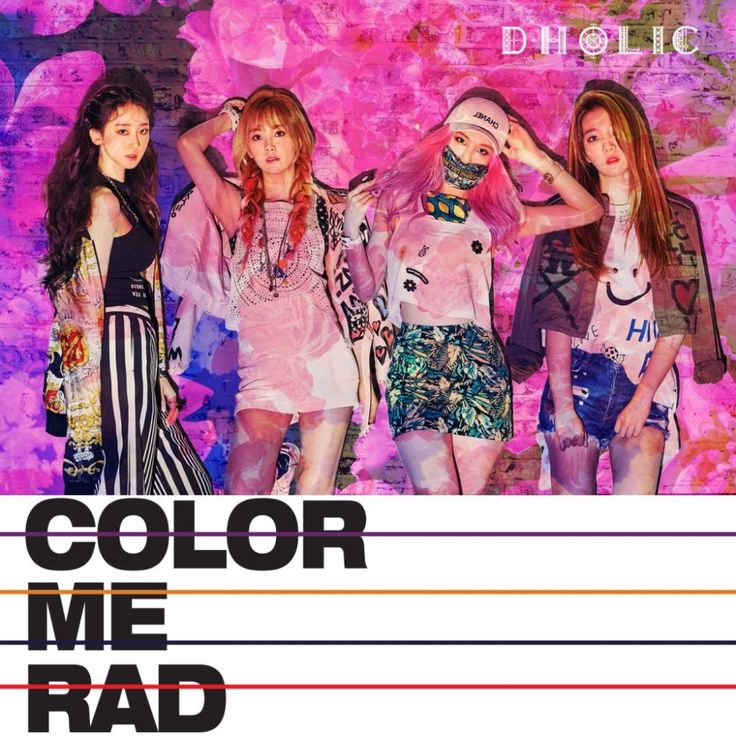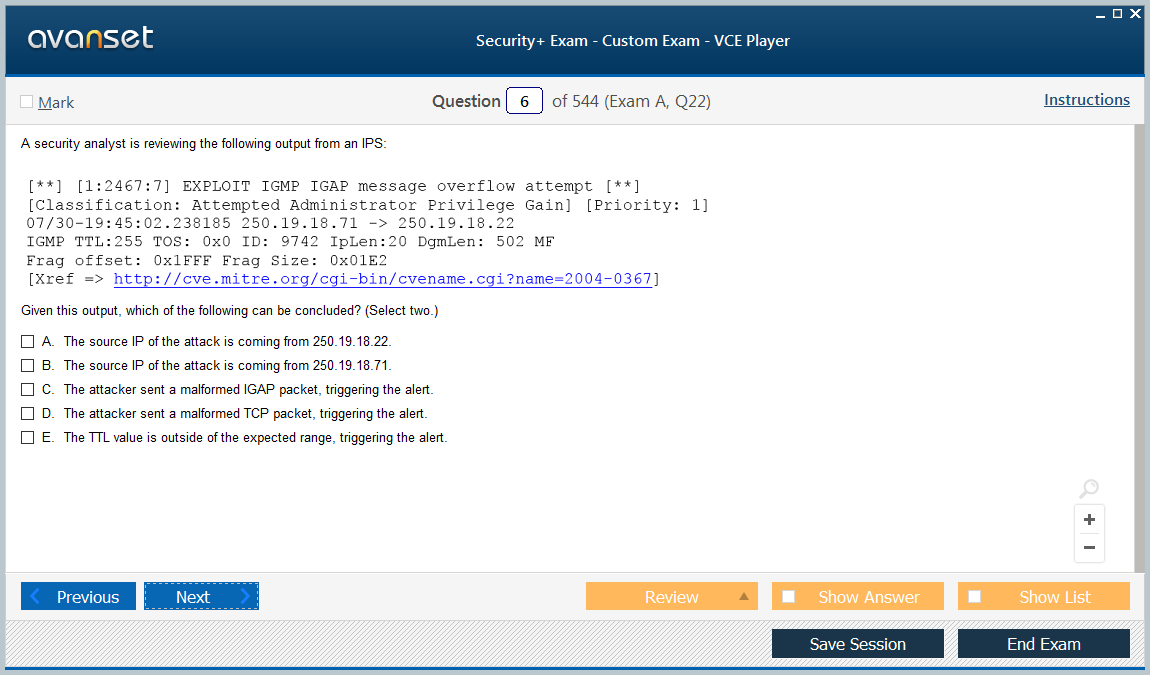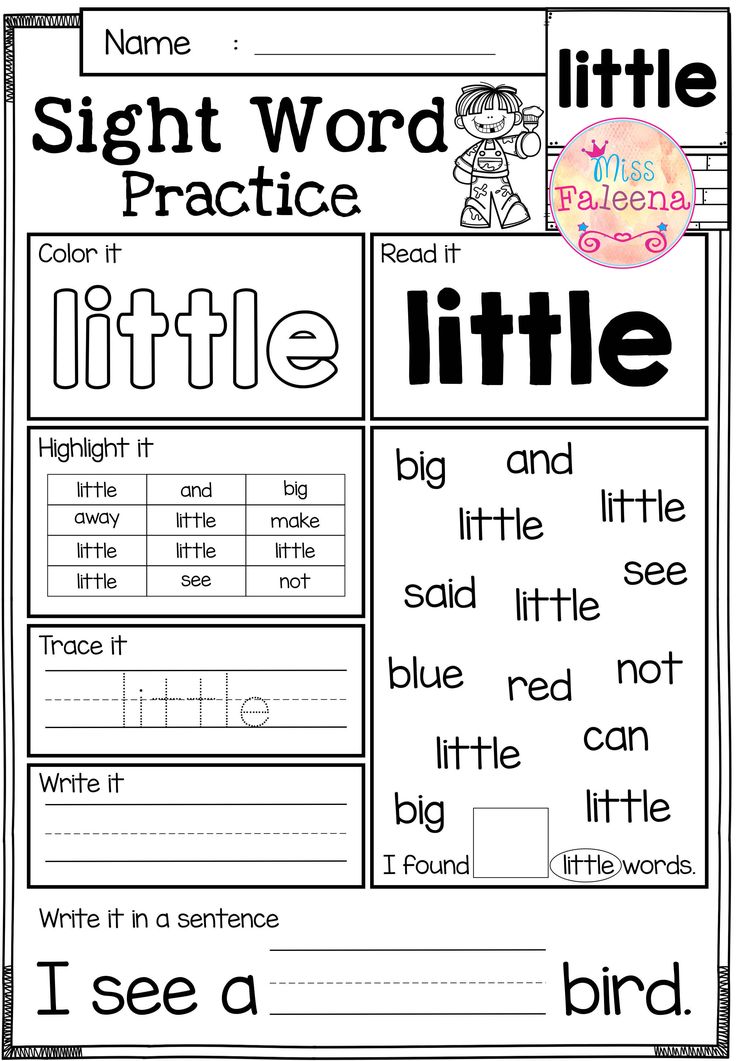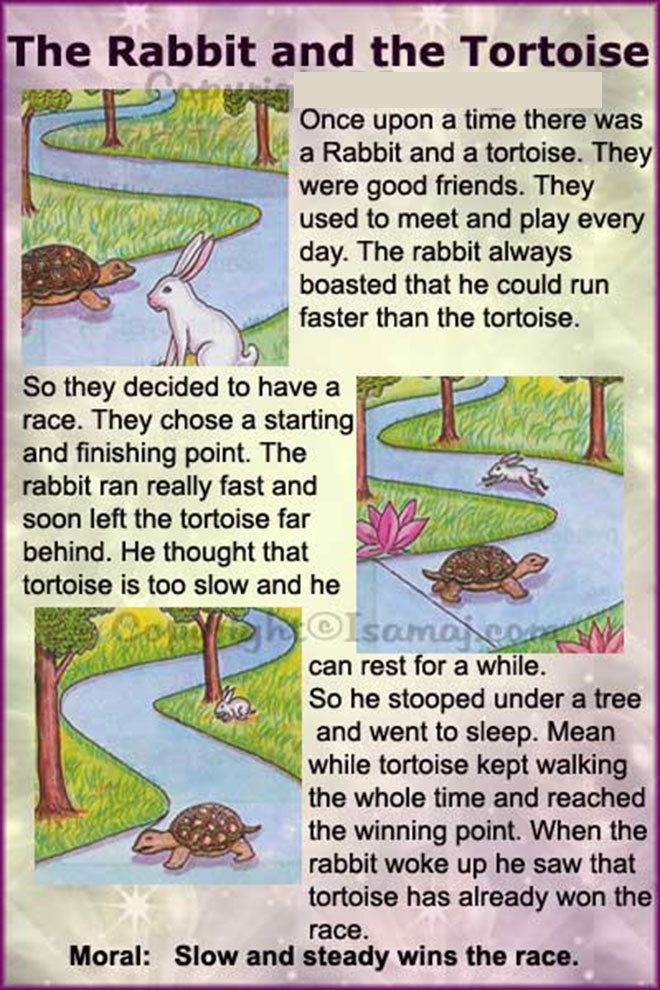Types reading strategies
Teach the Seven Strategies of Highly Effective Readers
To assume that one can simply have students memorize and routinely execute a set of strategies is to misconceive the nature of strategic processing or executive control. Such rote applications of these procedures represents, in essence, a true oxymoron-non-strategic strategic processing.
— Alexander and Murphy (1998, p. 33)
If the struggling readers in your content classroom routinely miss the point when “reading” content text, consider teaching them one or more of the seven cognitive strategies of highly effective readers. Cognitive strategies are the mental processes used by skilled readers to extract and construct meaning from text and to create knowledge structures in long-term memory. When these strategies are directly taught to and modeled for struggling readers, their comprehension and retention improve.
Struggling students often mistakenly believe they are reading when they are actually engaged in what researchers call mindless reading (Schooler, Reichle, & Halpern, 2004), zoning out while staring at the printed page. The opposite of mindless reading is the processing of text by highly effective readers using cognitive strategies. These strategies are described in a fascinating qualitative study that asked expert readers to think aloud regarding what was happening in their minds while they were reading. The lengthy scripts recording these spoken thoughts (i.e., think-alouds) are called verbal protocols (Pressley & Afflerbach, 1995). These protocols were categorized and analyzed by researchers to answer specific questions, such as, What is the influence of prior knowledge on expert readers’ strategies as they determine the main idea of a text? (Afflerbach, 1990b).
The protocols provide accurate “snapshots” and even “videos” of the ever-changing mental landscape that expert readers construct during reading. Researchers have concluded that reading is “constructively responsive-that is, good readers are always changing their processing in response to the text they are reading” (Pressley & Afflerbach, 1995, p. 2). Instructional Aid 1.1 defines the seven cognitive strategies of highly effective readers, and Instructional Aid 1.2 provides a lesson plan template for teaching a cognitive strategy.
2). Instructional Aid 1.1 defines the seven cognitive strategies of highly effective readers, and Instructional Aid 1.2 provides a lesson plan template for teaching a cognitive strategy.
Instructional Aid 1.1: Seven Strategies of Highly Effective Readers | |
|---|---|
| Strategy | Definition |
| Activating | “Priming the cognitive pump” in order to recall relevent prior knowledge and experiences from long-term memory in order to extract and construct meaning from text |
| Inferring | Bringing together what is spoken (written) in the text, what is unspoken (unwritten) in the text, and what is already known by the reader in order to extract and construct meaning from the text |
| Monitoring-Clarifying | Thinking about how and what one is reading, both during and after the act of reading, for purposes of determining if one is comprehending the text combined with the ability to clarify and fix up any mix-ups |
| Questioning | Engaging in learning dialogues with text (authors), peers, and teachers through self-questioning, question generation, and question answering |
| Searching-Selecting | Searching a variety of sources in order to select appropriate information to answer questions, define words and terms, clarify misunderstandings, solve problems, or gather information |
| Summarizing | Restating the meaning of text in one’s own words — different words from those used in the original text |
| Visualizing-Organizing | Constructing a mental image or graphic organizer for the purpose of extracting and constructing meaning from the text |
| Download chart » (8K PDF)* |
Instructional Aid 1.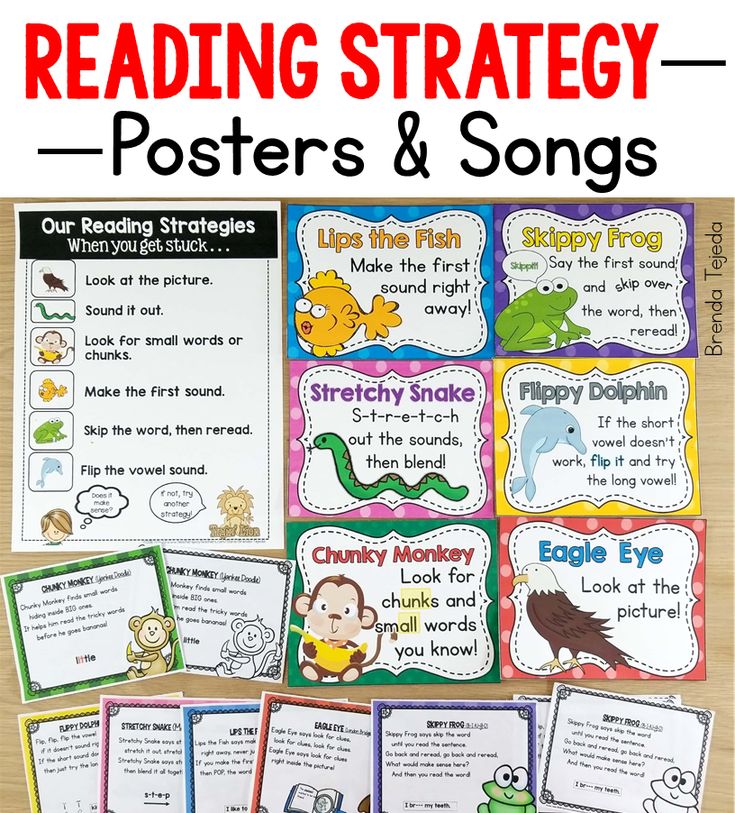 2: A Lesson Template for Teaching Cognitive Strategies 2: A Lesson Template for Teaching Cognitive Strategies
| |
|---|---|
| Steps | Teacher Script |
| 1. Provide direct instruction regarding the cognitive strategy | |
| a. Define and explain the strategy | |
| b. Explain the purpose the strategy serves during reading | |
| c. Describe the critical attributes of the strategy | |
| d. Provide concrete examples/nonexamples of the strategy | |
| 2. Model the strategy by thinking aloud | |
| 3. Facilitate guided practice with students | |
| Download chart » (8K PDF)* |
Instructional Aid 1.3: A Lesson Template for Teaching Summarizing | |
|---|---|
| Lesson Template for Teaching Cognitive Strategies | Lesson Plan for Teaching Summarizing |
1.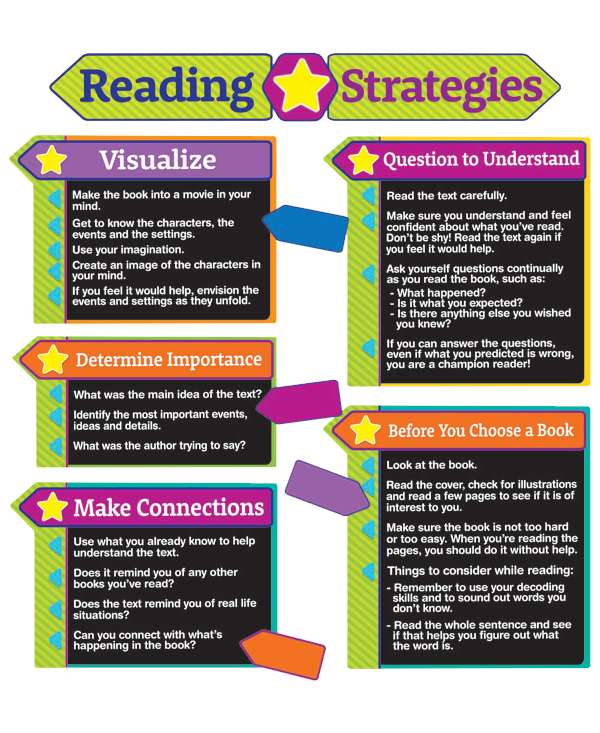 Provide direct instruction regarding the cognitive strategy Provide direct instruction regarding the cognitive strategy | |
| a. Define and explain the strategy. | Summarizing is restating in your own words the meaning of what you have read—using different words from those used in the original text—either in written form or a graphic representation (picture of graphic organizer). |
| b. Explain the purpose the strategy serves during reading | Summarizing enables a reader to determine what is most imporant to remember once the reading is completed. Many things we read have only one or two bid ideas, and it’s important to identify them and restate them for purposed of retention. |
| c. Describe the critical attributes of the strategy. | A summary has the following characteristics. It: –Is short –Is to the point, containing the big idea of the text –Omits trivial information and collapses lists into a word or phrase –Is not a retelling or a “photocopy” of the text |
d.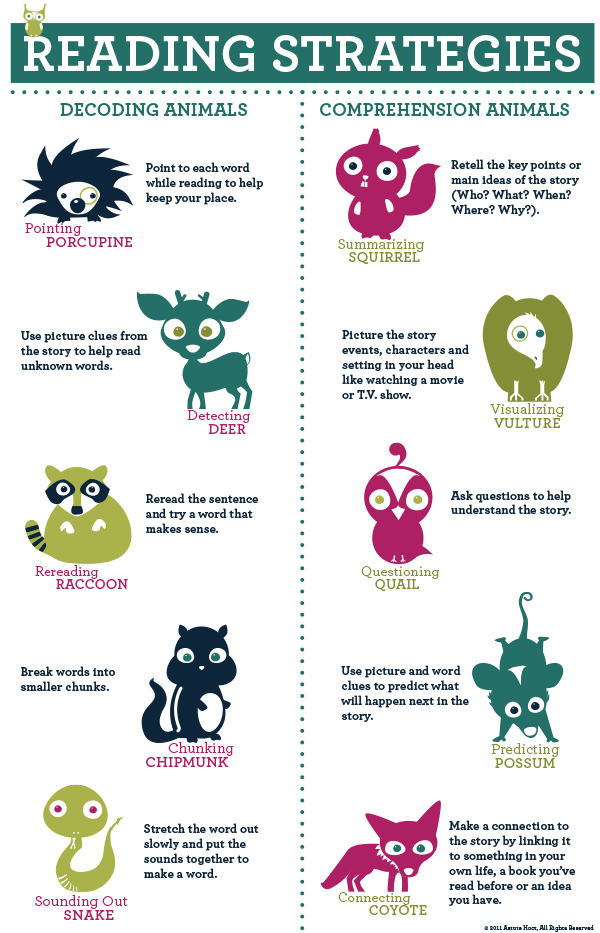 Provide concrete examples/nonexamples of the strategy. Provide concrete examples/nonexamples of the strategy. | Examples of good summaries might inlude the one-sentence book summaries from The New York Times Bestsellers List, an obituary of a famous person, or a report of a basketball or football game that captures the highlights. The mistakes that students commonly make when writing summaries can be more readily avoided by showing students excellent nonexamples (e.g., a paragraph that is too long, has far too many details, or is a complete retelling of the text rather than a statement of the main idea. |
| 2. Model the strategy by thinking aloud. | Thinking aloud is a metacognitive activity in which teachers reflect on their behaviors, thoughts, and attitudes regarding what they have read and then speak their thoughts aloud for students. Choose a section of relatively easy text from your discipline and think aloud as you read it, and then also think aloud about how you would go about summarizing it — then do it.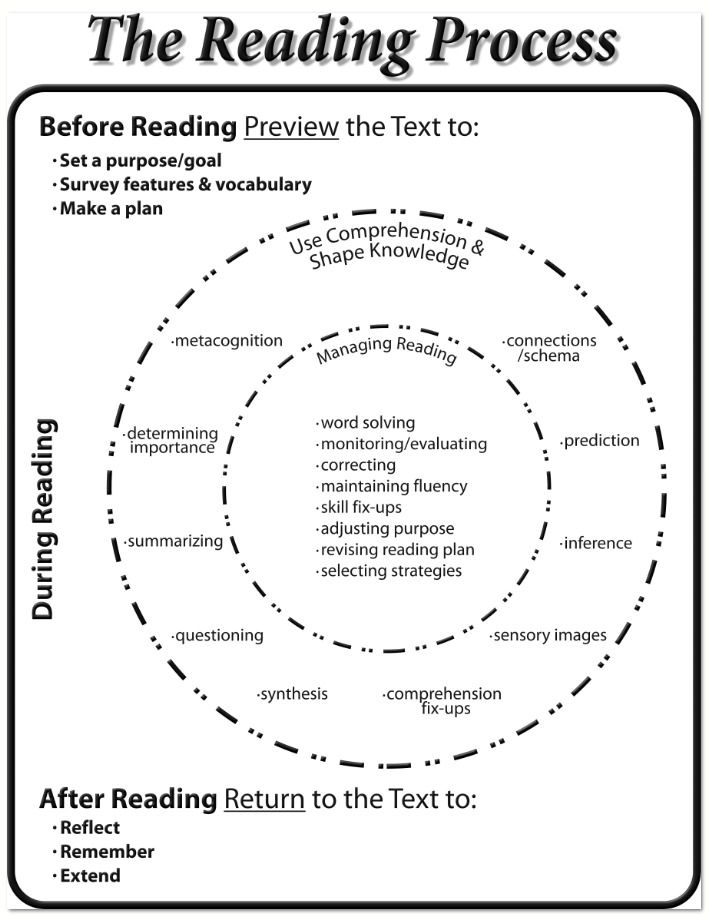 |
| 3. Facilitate guided practice with students. | Using easy-to-read content text, read aloud and generate a summary together with the whole class. Using easy-to-read content text, ask students to read with partners and create a summary together. One students are writing good summaries as partners, assign text and expect students to read it and generate summaries independently. |
| Download chart » (9K PDF)* |
McEwan, 2004. 7 Strategies of Highly Effective Readers: Using Cognitive Research to Boost K-8 Achievement. Wood, Woloshyn, & Willoughby, 1995. Cognitive Strategy Instruction for Middle and High Schools.
McEwan, E.K., 40 Ways to Support Struggling Readers in Content Classrooms. Grades 6-12, pp.1-6, copyright 2007 by Corwin Press. Reprinted by permission of Corwin Press, Inc.
25 Reading Strategies That Work In Every Content Area
111.6k
Views
FacebookTwitterSubscribe
by TeachThought Staff
Reading is simply a sequence of symbol interpretation.
By understanding that letters make sounds, we can blend those sounds together to make whole sounds that symbolize meaning we can all exchange with one another. By mastering the symbols and their most common contexts, reading becomes a practice in thought–less about decoding and more about understanding.
Without getting too Platonic about it all, reading doesn’t change simply because you’re reading a text from another content area. Only sometimes it does.
Science content can often by full of jargon, research citations, and odd text features.
Social Studies content can be an interesting mix of itemized information, and traditional paragraphs/imagery.
Literature? Well, that depends on if you mean the flexible form of poetry, the enduring structure of a novel, or emerging digital literature that combines multiple modalities to tell a story.
This all makes reading strategies somewhat content area specific. Stopping (maybe the most undervalued strategy ever) and Rereading might make more sense in science, while Visualization and Text Connections may make more sense reading literary works. Questioning the Text may make equal sense in both.
Questioning the Text may make equal sense in both.
But if you’d like to start with a basic set of strategies, you could do worse than the elegant graphic above from wiki-teacher.com. (Useful site, by the way.) It lists 12 basic reading comprehension strategies, to which we’ve added 13 for a full 25.
Looking for related curricula ideas? Check out our Reading Comprehension Strategy Resources
25 Reading Strategies That Work In Every Content Area
1. Reread
2. Activate Prior Knowledge
3. Use Context Clues
4. Infer
5. Think Aloud
6. Summarize
7. Locate Key Words
8. Make Predictions
9. Use Word Attack Strategies
10. Visualize
11. Use Graphic Organizers
12. Evaluate Understanding
To the above list, we’d add:
13. Question the Text
14. Stop!
15. Monitor & Repair Understanding (While Reading)
16. Paraphrase
17.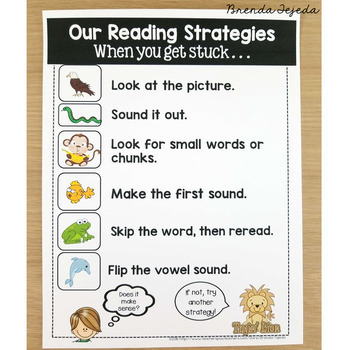 Annotate the Text
Annotate the Text
18. Adjust Reading Rate
19. Prioritize Information
20. Use Graphic Notetaking
21. Predict
22. Set a Reader Purpose
23. Text-connections (text-to-self, text-to-text, text-to-world)
24. Skim
25. SSQ (Stop, Summarize, Question)
We’ll gather these and put them in a Before Reading, During Reading, and After Reading matrix soon. Only because we like you.
See Also: 25 Self-Guided Reading Responses For Fiction And Non-Fiction
25 Reading Strategies That Work In Every Content Area
Library Navigator: Strategies for Reading
Strategy is a set of methods arranged in a certain sequence and aimed at reaching certain targets.
Strategy reading - the path and program of action of the reader. Selected for a specific purpose text. The term was born at the dawn of psycholinguistics in the works of K.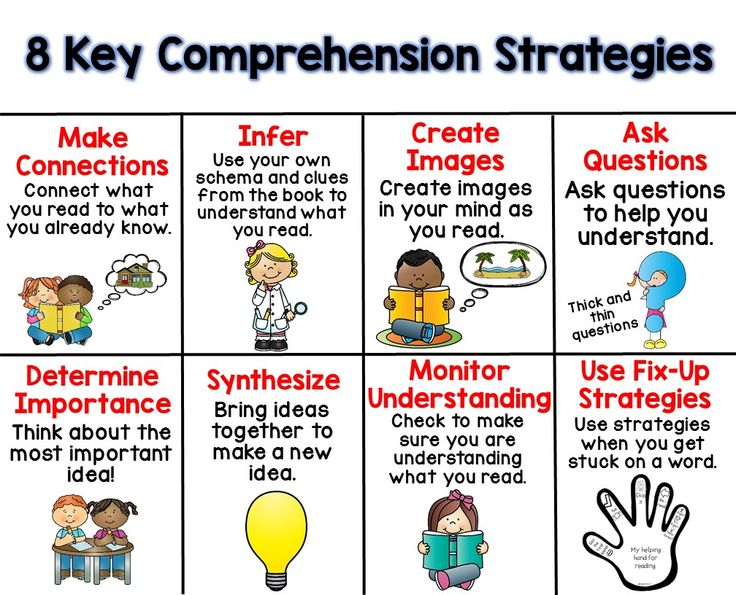 Goodman and P. Kolers.
Goodman and P. Kolers.
Strategies readings can be used in discussions and commented readings, in library lessons, become part of the interactive elements cultural event. nine0006
one. Classification of reading strategies:
| Feature | Subspecies | |
| By relation to text | Pretext | Cerebral assault Landmarks anticipations dissection question preliminary questions Battery questions Glossary nine0003 Alphabet round tableReading in a circle Read and speak out Theater at the microphone |
| Text | Timeout Reading with stops Reading in litters Strategies guided reading Strategy reader responses | |
| Posttext | Battery questions after text Where answer? Checking sheet | |
| Complex (all above steps) | ||
| By attitude to mental activity | cognitive (with one type of text) | Intellectual-cognitive Information and cognitive Cognitive-mnemonic |
| Metacognitive (with all types) | Ask author reasoning out loud Pre-, post-doc assignments Verification sheets Definition difficulty understanding | |
| Strategy speech activity | Audition Speaking Letters | Communication Reflective |
2. Description of reading strategies
Description of reading strategies
| Strategy name | Definition |
| 1. Pre-text strategies activities | Update previous knowledge and experience related to the text. |
| 1.1. Brainstorming | Readers name associations, arising from the title of the text. |
| 1.2. Anticipation landmarks | The librarian prepares some judgments related to the text and invites readers to mark those with which they agree. |
| 1.3. Battery of questions | Identification, through surveys, readers' knowledge of the topic of the text. |
| 1.4.Round table alphabet nine0021 | Readers receive a sheet divided into cells, each with a letter of the alphabet. A task - write in each of them a word related to the topic of the text. |
| 1.5. Reading in a circle | Alternate reading aloud for better understanding and enhancing the attention of readers. |
| 1.6 Read aloud and speak out | Paired Reading Strategy: First the participant reads aloud, and the second speaks on a certain librarian topic (make a comment, raise a question, predict the continuation, identify difficult or incomprehensible). |
| 1.7. Theater at the microphone | Role reading. |
| 2. Texting strategies activities | Called to do the reading interactive, teach how to combine parts of the text into a single whole, conduct monitoring understanding of the content of the text. |
| 2.1. Timeout | The librarian determines the time for reading, then readers retell the content of the text in pairs, summarize or make predictions about future developments. nine0006 |
| 2. | After reading the passage, the reader answers questions from the librarian. |
| 2.3 Reading with marks | The reader makes notes: understood, I don't understand, we need to discuss. The strategy is aimed at reflecting one's understanding text. |
| 2.5. Directed strategy reading | Separate passages of text are read sequentially with stops for discussion on issues that offered to young readers by adults. nine0006 |
| 2.6. Reader strategy responses | Recording reader responses to questions about the main events of the story, their nature, the problems of the characters, the climax and plot organization. |
| 3. Post-text strategies | Thinking about the text and doing assignments. |
| 3.1. Battery of questions after text | Issues related to understanding text and its critical evaluation. |
| 3.2. Where's the answer? | Finding an answer to a question in text, between lines, matching different parts of the text |
| 3. | Reader at home or in the library answers the questions of the "checklist" compiled by the librarian. |
| 4.Cognitive strategies | Assume reflection readable text. The strategy is suitable for reading educational scientific texts. |
| 4.1.Intellectual-cognitive | Highlighting while reading key words, concepts, establishing connections and grouping, classification, induction and deduction. |
| 4.2. Information-cognitive | Search for specific information in text according to the given criteria. |
| 4.3 Cognitive-mnemonic | Assumes an organized memorization using keywords, schemes. Also includes strategies "landmarks anticipation of information" and "K-W-L" - "I know - I want to know - I found out." nine0006 |
| 5. Metacognitive Strategies | Knowledge through the mechanism of self cognition: monitoring and self-monitoring of text comprehension, search for problematic questions in the text, tasks. Effective when working with any text and may include pre-, post- and text activities. |
| 5.1. Ask the author | The reader learns to think while reading by searching for answers to the difficult ones previously marked by the librarian places in the text. |
| 6. Communication Strategies | Interaction with the author and by other readers. Includes "G-S-R" strategies (abstract - a brief retelling - retelling), "RAFT" (reading taking into account the chosen role). More details - in the educational and methodical allowances Reading+. Preparing teachers and librarians for implementation interdisciplinary program "Fundamentals of semantic reading and working with text": study method. allowance / ed.-comp. and scientific editor T. G. Galaktionova. - M.: RSHBA, 2018. - S. 53-55. nine0006 |
| 7. Reflexive Strategies | Combine reading with stops and role play. The librarian distributes the roles of expert, reporter and observer between readers previously divided into three. |
Materials for scripting activities using reading strategies:
methodical recommendations for reading aloud [Electronic resource]: website // Samara Regional children's library. – Access mode: http://www.sodb.ru/node/486.
tricks semantic reading [Electronic resource]: website // Methodical workshop "Development and implementation of the semantic reading strategy in the educational space of the school on stage of the introduction of the Federal State Educational Standard LLC. – Access mode: https://sites.google.com/site/ucitelamv/home/klassifikacia-priemov-smyslovogo-ctenia. nine0006
nine0006
Development semantic reading in the context of the implementation of the Federal State Educational Standards of the OO [Electronic resource]: a collection of abstracts international scientific and practical conference. April 7, 2016 / State autonomous educational institution of additional professional education "Institute for the Development of Education and Social Technologies". - Kurgan, 2016. - 156 p. - Access mode: http://kna-s6.edu.27.ru/files/uploads/docs/smuslchten/oput/megdunarodnaya_nauchno_prakticheskaya_konferentsiya.pdf.
Romanicheva, E. S. Reader. Reading. Book: dictionary / E.S. Romanicheva, G. V. Prantsova. – M.: Bibliomir, 2018. – 208 p. nine0006
Smetannikova, N. N. Education of the reader in a culture-creating model of education [Electronic resource]: website // Interregional Center for Library Cooperation. - Access mode: http://www.mcbs.ru/files/File/smetannikova(1). pdf.
pdf.
Strategies reading [Electronic resource]: site // Solnechny. – Access mode: http://www.selezneva-lichnost.ru/index.php/strategii-chteniya.
Reading with stops [Electronic resource]: blog // There is happiness! – Access mode: http://bdb100ktn.blogspot.com/2015/02/blog-post_27.html. nine0006
LIST SOURCES
1.
Zagashev AND ABOUT. Reading in the library. Strategy "Reading with stops" / I. O. Zagashev. - M.: Chistye Prudy, 2010. - 31 p.
2.
Prantsova GV, Modern reading strategies: theory and practice. meaningful reading and work with text: textbook / G. V. Prantsova, E.S. Romanichev. - 2nd ed., correct and additional - M. : FORUM, 2015. - 368 p.
3.
Read+. Preparation of teachers and librarians for the implementation of an interdisciplinary program "Fundamentals of semantic reading and working with text": textbook-method. allowance / auth.-stat. and scientific editor T. G. Galaktionova. – M.: RSHBA, 2018. – 164 p. nine0006
Preparation of teachers and librarians for the implementation of an interdisciplinary program "Fundamentals of semantic reading and working with text": textbook-method. allowance / auth.-stat. and scientific editor T. G. Galaktionova. – M.: RSHBA, 2018. – 164 p. nine0006
R. S. Sakharenkova
Effective strategies for working with text in the classroom at school
The ultimate goal of teaching Russian is practical literacy and language competence. The basis of the content of literature as an academic subject is reading and textual study of works of art.
Work with the text as the main didactic unit allows schoolchildren to combine the activities of developing practical skills of literate writing and speech development. nine0476
Every teacher dreams that all students come to the lesson prepared: they have completely read this or that work or paragraph. And not just read, but understood the meaning of the text read. During the final certification, the graduate must also understand the meaning of the read text. Whether it is a task to the text or the text itself.
During the final certification, the graduate must also understand the meaning of the read text. Whether it is a task to the text or the text itself.
Teachers working in grades 9 and 11 know that most mistakes are made due to misunderstanding of what is read, as well as when reading the assignment itself. nine0006
Teaching a child to read “correctly”, “effectively”, “productively” is an important task for a teacher. That is why the technology of productive reading (PRT), developed by Professor N. Svetlovskaya, acquires a leading role and contributes to the achievement of the results that are mentioned in the new standards.
The technology is universal and can be used in lessons of any cycle.
It is aimed at the formation of all universal educational activities: cognitive, communicative, regulatory, personal.
The technology of productive reading differs sharply from the traditional technology of transferring ready-made knowledge to a student. The teacher organizes the children's research work in such a way that they themselves "think" about solving the key problem of the lesson and can themselves explain how to act in new conditions. The teacher becomes a partner, a mentor, an observer.
The teacher organizes the children's research work in such a way that they themselves "think" about solving the key problem of the lesson and can themselves explain how to act in new conditions. The teacher becomes a partner, a mentor, an observer.
The developed technology includes three stages of working with text, a three-stage process. nine0505
The goal of is the development of anticipation (the ability to guess, predict the content of the text). Task - to develop motivation for reading the text
1. Strategy "Forecast by headline".
Task: think about what can be discussed in the story of K.G. Paustovsky "Warm bread", in the work of P.P. Bazhov "Mistress of the Copper Mountain", etc.
– Try to predict the content by the first line of the story…Remember the name of the story….Does the content of the story match the title? nine0006
Give examples of such discrepancies.
Associative bush (circle, row). Today we are going to read and discuss the topic… What associations do you have about the stated topic?
2. Strategy "Brainstorm" ("Basket of ideas").
Task: answer the questions before reading the text (fairy tales "Warm Bread") - What do you know about K. G. Paustovsky? What do you think the story will be about? Who can be the main character? What event in the story can be described. nine0006
3. Strategy "Image of the text".
Task: check your assumptions. Based on the words taken from the text, try to make a short plot story. The title of the story is given.
4. Strategy "Battery of questions".
Task: make up questions to the text according to the title, according to the illustrations.
5. Glossary strategy.
Task: look at the list of words and mark those that can be related to the text.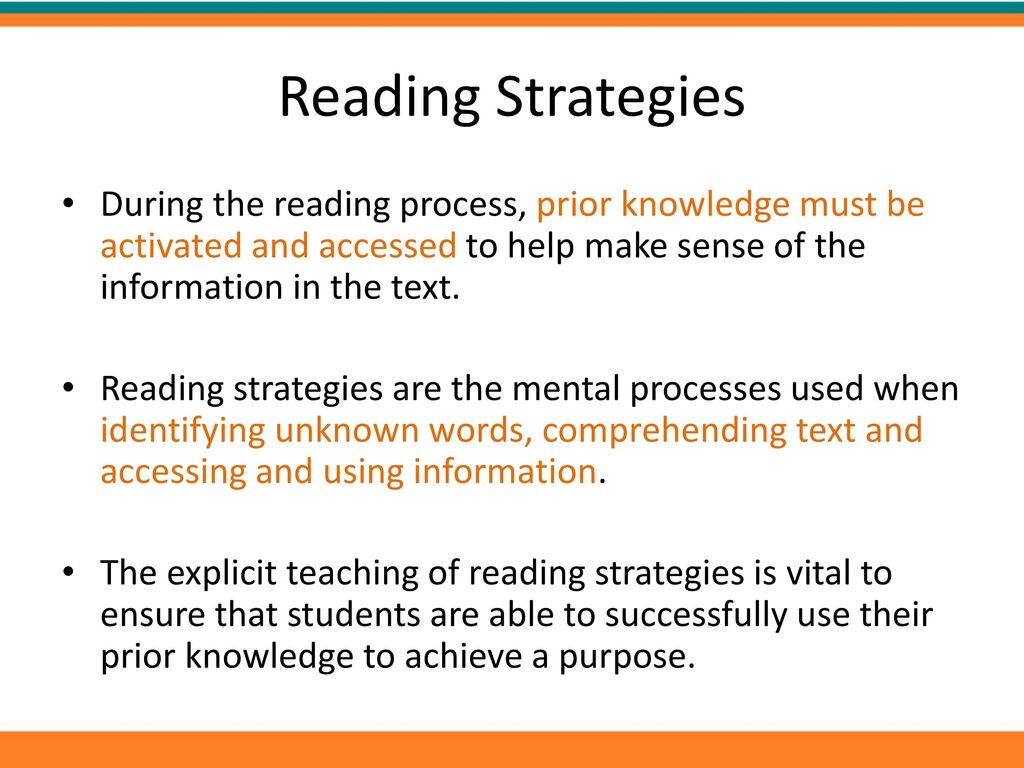 When you finish reading the text, go back to these words and look at their meaning and the use of words used in the text. nine0006
When you finish reading the text, go back to these words and look at their meaning and the use of words used in the text. nine0006
6. Strategy “We compete with the writer”.
Task: try to predict the content of the book by looking at the illustrations. One student offers his version, the rest complete it.
7. Strategy "True and False Statements".
8. Strategy I know, I want to know, I found out.
Stage 2 - stage of text activity.
The purpose of is to understand the text and create its reader's interpretation, summarizing part of the read text, asking questions of a general nature, making assumptions about the further development of the plot and the role of characters in the composition of the text, etc.). nine0006
The main task of is to ensure the full perception of the text. The main strategies at the stage of text activity are dialogue with the author, commented reading.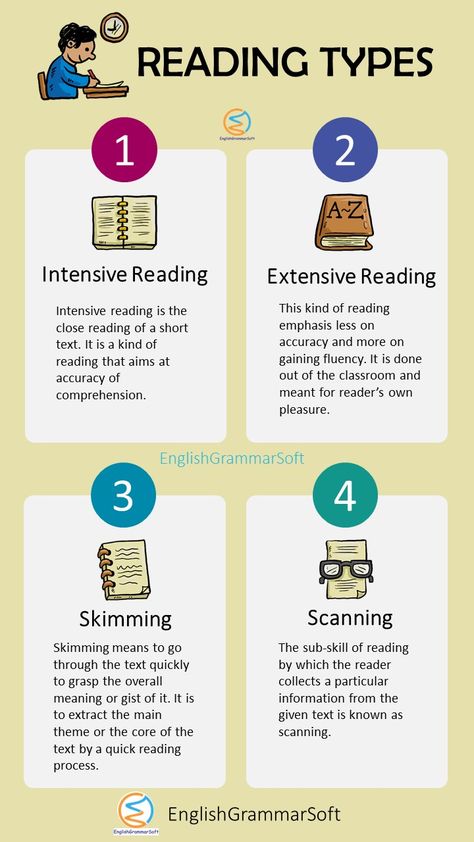
1. Strategy "Reading in a circle". The text is read in turn (each "circle member" reads a paragraph). After this, a stop follows: everyone asks questions to the read passage. If the question cannot be answered (it does not correspond to the text), then the question is considered incorrect. * All correct questions can be recorded. nine0006
2. Silent reading with questions strategy.
3. Strategy “Reading to yourself with notes. (Insert)" . Marginal notes: + - knew; - - new; ? - interesting; V is unclear. Others are possible: B - question; O - answer; Z - I know; N - new; And - interesting; X - I want to know; C - ask; U to clarify.
4. Strategy "Reading with stops". Reading the text with stops, during which tasks are given in the form of questions: some are aimed at checking understanding, others - at predicting the content of the next passage. nine0006
5. The strategy "Pose a problem - offer a solution. " Remember what problems the heroes of the work face (the problem is formulated and recorded in an oval). Next, the children can name several problems, students are divided into groups and offer all kinds of solutions to problems.
" Remember what problems the heroes of the work face (the problem is formulated and recorded in an oval). Next, the children can name several problems, students are divided into groups and offer all kinds of solutions to problems.
6. Strategy "Creating a question plan". The student conducts a semantic grouping of the text, highlights the strong points, divides the text into semantic parts and titles each part with a key question……. nine0006
Stage 3 - the stage of post-text (post-text) activity.
The purpose of is to correct the reader's interpretation in accordance with the author's meaning.
The main task of is to provide in-depth perception and understanding of the text, raise a question to the text as a whole, followed by a conversation, the result of which should be an understanding of the author's meaning. Re-addressing the title, illustrations, performing creative tasks.
2.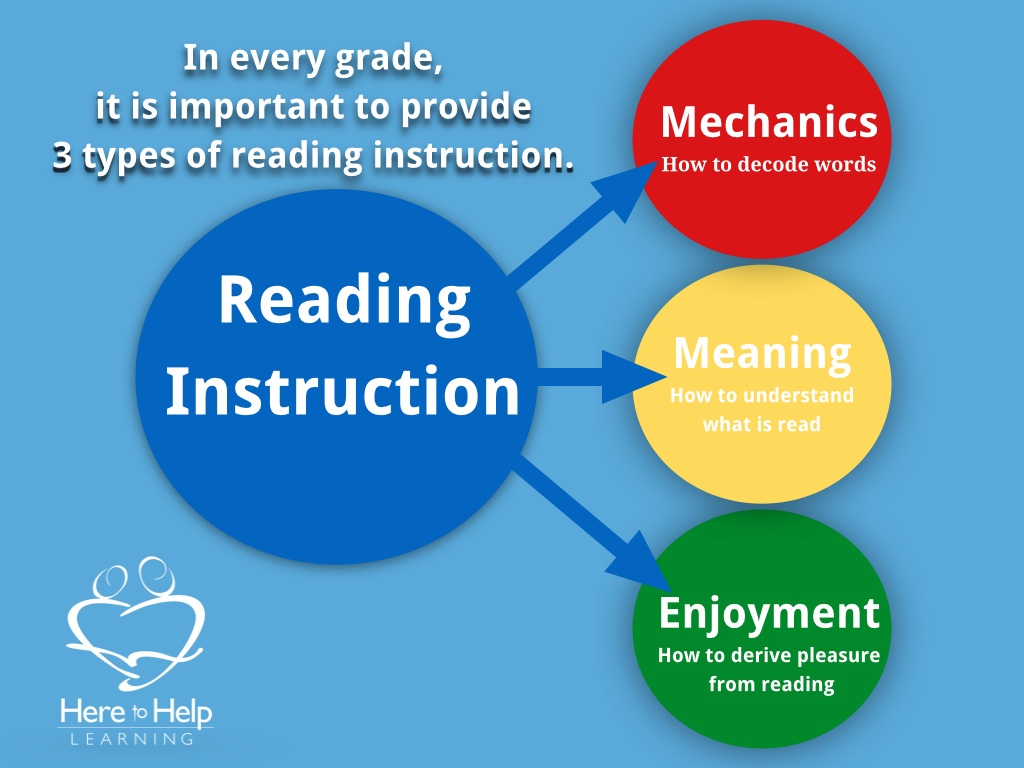 Question tree strategy Crown – what? where? when? Barrel - why? How? Could you? Roots - how to relate the text to life? With current events? What is the author trying to show?
Question tree strategy Crown – what? where? when? Barrel - why? How? Could you? Roots - how to relate the text to life? With current events? What is the author trying to show?
3. Strategy "Bloom's Cube" (Benjamin Bloom is a famous American teacher, author of many pedagogical strategies = technician).
The beginnings of the questions are written on the faces of the cube: “Why?”, “Explain”, “Name”, “Suggest”, “Think up”, “Share”. The teacher or student rolls the die. nine0006
It is necessary to formulate a question to the educational material on the side on which the cube fell.
The “Name” question is aimed at the level of reproduction, i.e. at the simple reproduction of knowledge.
Question "Why" - the student in this case must find cause-and-effect relationships, describe the processes occurring with a certain object or phenomenon.
Question "Explain " - the student uses concepts and principles in new situations.

 When reading, there is a revision and explanation of the marks.
When reading, there is a revision and explanation of the marks. 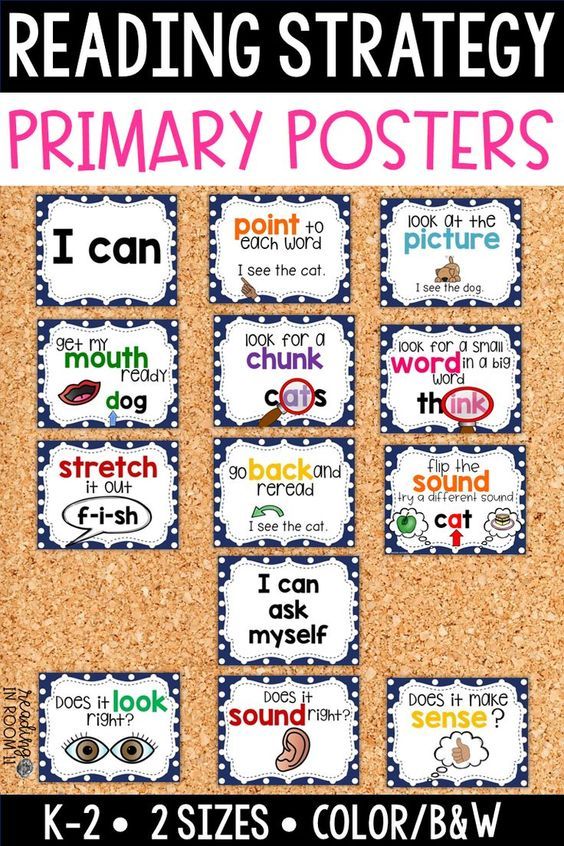 The strategy allows you to guide the discussion text while reading. nine0006
The strategy allows you to guide the discussion text while reading. nine0006  2 Reading with stops
2 Reading with stops 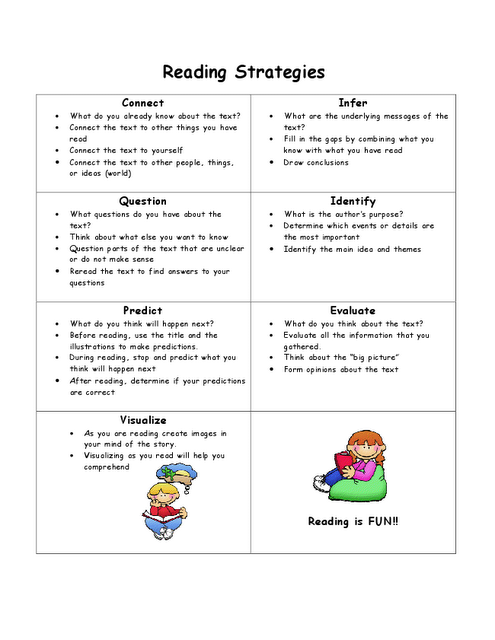 The recording form is given in the textbook Prantsova G.V., Modern reading strategies: theory and practice. Semantic reading and work with text: textbook / G. V. Prantsova, E.S. Romanichev. - 2nd ed., corrected. and additional - M . : FORUM, 2015. - S. 62-63. nine0006
The recording form is given in the textbook Prantsova G.V., Modern reading strategies: theory and practice. Semantic reading and work with text: textbook / G. V. Prantsova, E.S. Romanichev. - 2nd ed., corrected. and additional - M . : FORUM, 2015. - S. 62-63. nine0006 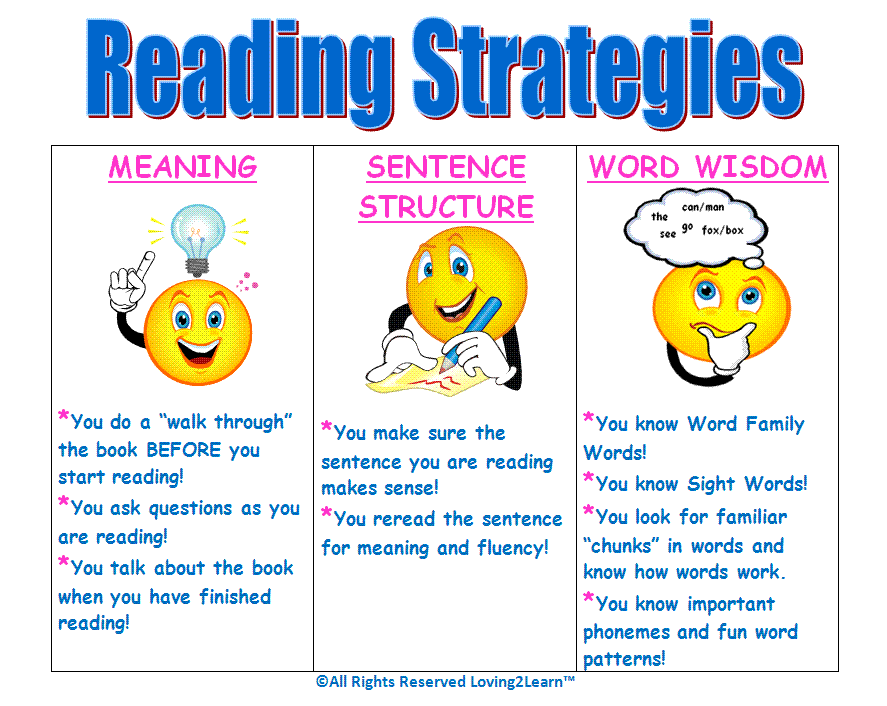 3. Checklist
3. Checklist 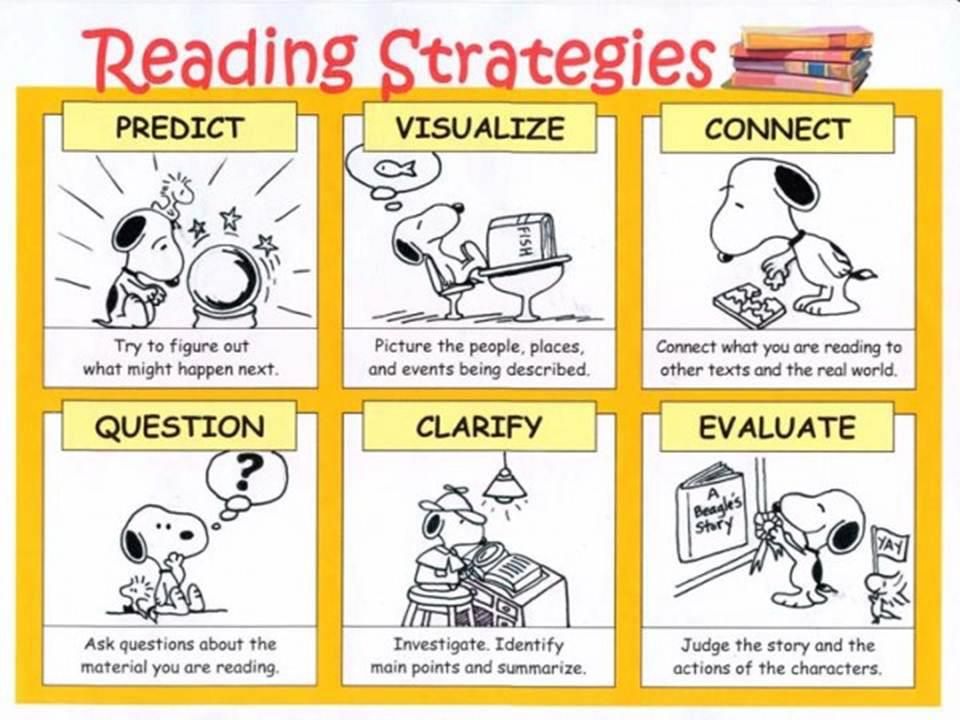
 nine0006
nine0006 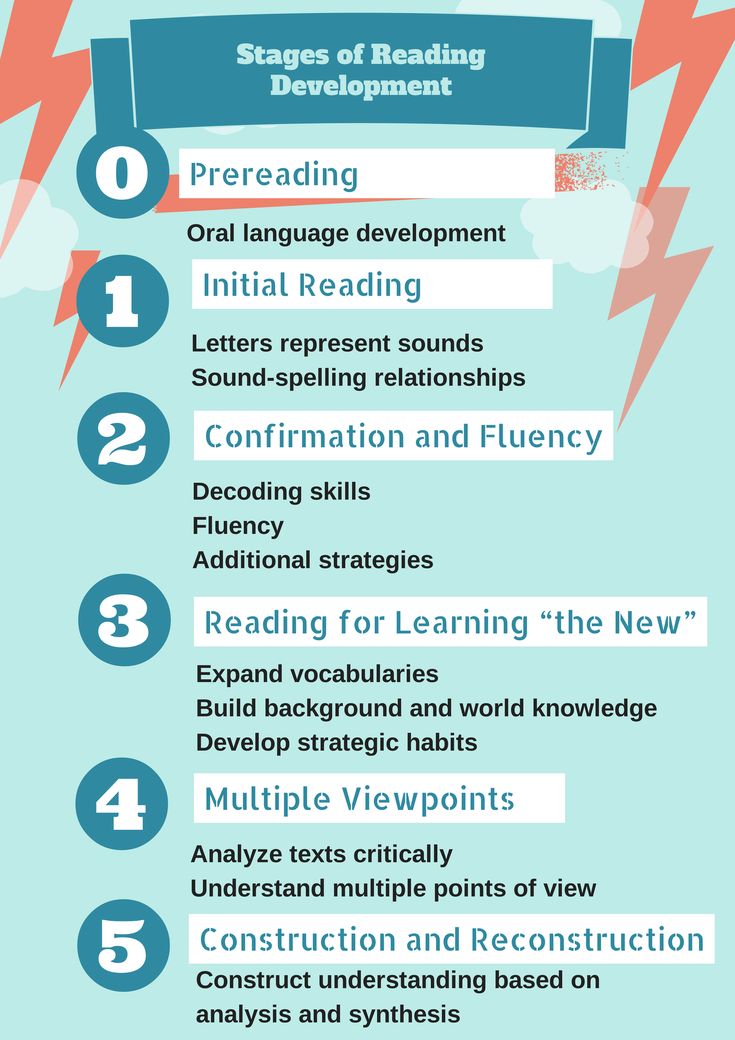 The task is to speak out reading a piece of text according to the role. For example, an expert presents the content of the material in the categories "interesting, known, difficult, unclear", the reporter summarizes what the expert said in the form of indirect speech, the observer comments on their work. nine0006
The task is to speak out reading a piece of text according to the role. For example, an expert presents the content of the material in the categories "interesting, known, difficult, unclear", the reporter summarizes what the expert said in the form of indirect speech, the observer comments on their work. nine0006 
